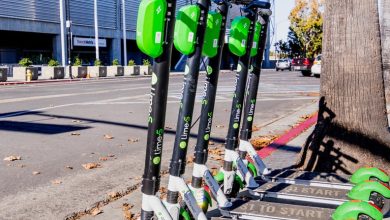Most partial automation driving systems lack proper safeguards, IIHS reports

Safeguards for partial automation systems in passenger vehicles are inadequate, according to the Insurance Institute for Highway Safety (IIHS), which launched a ratings program that examines the performance of these systems in areas such as driver monitoring, alerting mechanisms, emergency protocols, and overall system design.
According to David Harkey, IIHS president, most systems come up short at tasks such as making sure drivers are focused on the road or preventing the misuse of autonomous features.
The IIHS tested 14 systems from BMW, Ford, General Motors, Genesis, Lexus, Mercedes-Benz, Nissan, Tesla and Volvo. The Lexus Teammate with Advance Drive was the only system to receive an acceptable rating. GM’s Super Cruise system and Nissan’s ProPILOT Assist with Navi-Link received ratings of marginal, while the rest of the systems tested — including Ford’s BlueCruise, Genesis’ Highway Driving Assist 2 and Tesla’s Autopilot and Full Self-Driving (Beta) — rated as poor, according to the IIHS.
Requirements for a ‘good’ partial automation safeguard rating include monitoring the driver’s gaze and hand position; leveraging multiple, escalating types of alerts; driver involvement in automatic lane change; and disabling of automated features when the seat belt is unfastened, IIHS reported.
“Some drivers may feel that partial automation makes long drives easier, but there is little evidence it makes driving safer,” Harkey said in a release. “As many high-profile crashes have illustrated, it can introduce new risks when systems lack the appropriate safeguards.”
What follows is a truncated version of IIHS’ findings:
Driver monitoring: Systems should be able to determine if a driver’s attention shifts away from the road and if their hands are on the steering wheel.
According to the IIHS, none of the systems came close to meeting all of the driver monitoring requirements. However, Ford’s BlueCruise and Adaptive Cruise Control with Stop & Go and Lane Centering did come close. Those systems performed well when it came to sending alerts when a driver’s face or the camera lens was covered, but failed to detect when a motorist’s hands left the wheel.
Attention reminders: Alerts should be timely and persistent, IIHS reported, noting that best practices include dual-mode alerts, such as audible and visual warnings, within 10 seconds of a driver losing focus on the road, for example. Before 20 seconds pass, a third type of alert should be activated or emergency procedures to slow the vehicles should start.
Systems from Lexus, Ford and GM meet all of these requirements, while systems from Nissan and Tesla also had strong showings in this area.
Emergency procedures: Regardless of the number of alerts, that all systems should have a process to slow the vehicle down 35 seconds after driver disengagement is detected.
“Drivers who ignore alerts for this long are either in distress or misusing the systems,” IIHS noted in its report. If the emergency procedure is activated, vehicles should also send an alert to emergency responders or a 24-hour help center and all automation features should be disabled for the remainder of the trip.
Among the vehicles tested, only GM’s system met all of these requirements. Five of the test systems included two of the three emergency procedures and five included one.
Driver involvement: These requirements aim to make sure drivers stay engaged when behind the wheel, and include features such as:
- All lane changes initiated or confirmed by the driver.
- When an adaptive cruise control system brings a complete stop, it should not resume functioning unless it can confirm the driver is engaged and that no more than 20 minutes have passed.
- Lane-centering systems should not switch off automatically when manual steering adjustments are made. IIHS reported this can discourage drivers from being physically engaged in operating the vehicle.
The IIHS reported that systems performed the best in the driver involvement category.
Safety features: According to the IIHS, there is no evidence that partial automation has any safety benefits. As such, engaging proven safety features such as seat belts, automatic emergency braking and lane departure systems should be required before self-driving features can function.
The systems from Nissan’s ProPILOT Assist 2.0, Lexus and GM were the only ones that met all the requirements in this category, while Nissan’s ProPILOT Assist with Navi-link and BMW’s system also performed well. The two Genesis systems failed all the safety feature requirements.
While current protections fall short, IIHS reported some manufacturers have already started changing their systems, which could result in the ratings being adjusted. For example, the two Tesla systems evaluated relied on software that preceded the December 2023 recall event.
“These results are worrying, considering how quickly vehicles with these partial automation systems are hitting our roadways,” Harkey said. “But there’s a silver lining if you look at the performance of the group as a whole. No single system did well across the board, but in each category at least one system performed well. That means the fixes are readily available and, in some cases, may be accomplished with nothing more than a simple software update.”
Related:
Read the full article here








